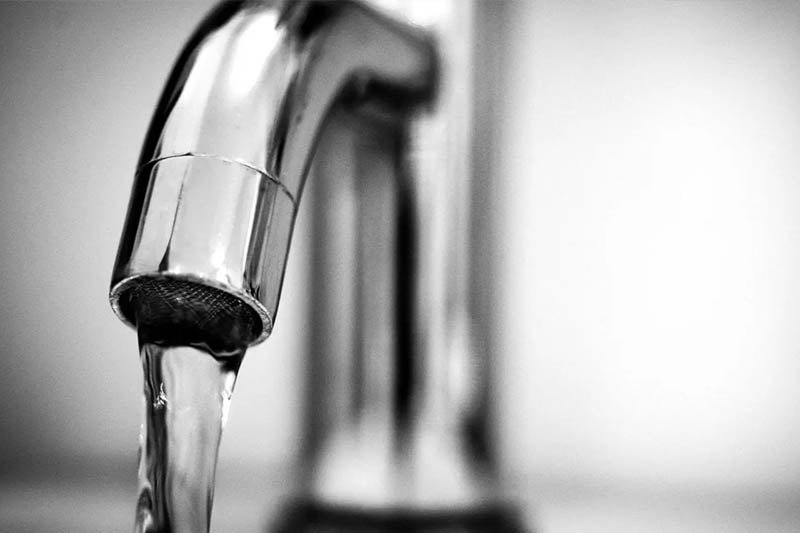We’re fortunate in the United States to have access to relatively good quality water in our homes.
Through our support of
, we’re so aware of what a luxury it is to not only turn a tap to access water, but to be able to trust that it’s safe. That being said, not everyone has an understanding of where their tap water comes from, or what its flaws may be, so we’re breaking down some of the basics here.
The source of your tap water
If you live in a city or town in the US, your home is most likely connected to a public water system. Towns and cities using public water supplies access their supply via groundwater – water that is found below ground in soil pore spaces and in the fractures of rock formations – or surface water – water that collects in lakes, rivers, or reservoirs. Individual wells are almost exclusively groundwater. If you’re curious about your water source, that information can be found in your city or town’s annual water report.
Depending on where you live and where your water comes from, there are a lot of different influences on the water quality your municipality is starting with. Water tends to absorb other substances; raindrops contain dust particles, and rainwater picks up everything from soil particles to organic material as it flows over the ground to be collected in a river, lake, or other body of water. Both groundwater and surface water contain dissolved minerals and gases. Surface water is also affected by human activity around it. Stormwater runoff can pick up pesticides, fertilizers, road chemicals, motor oils, and other contaminants.
Suffice to say that, before your tap water can be considered safe, it needs to be tested and treated.
From the source, to your tap
The water that so easily gushes from your household taps has gone through a lot to get there! From an intake point at the source, most municipal water in the United States enters a water treatment plant. Here, water is treated using both physical and chemical methods. The main issues being addressed are clarification – that means getting rid of cloudiness caused by tiny particles suspended in the water – and disinfection, which destroys potentially harmful microbes. This is where chemicals such as chlorine come into play. Depending on where you live, the water treatment plant may also include softening, aeration, carbon adsorption, and fluoridation.
After all of that, water travels from the water treatment plant to your home. To get there, it must pass through your town or city’s water infrastructure. Again, depending on where you live and the condition of this infrastructure, the treated water may unfortunately pick up new sediment and contaminants from the water pipes it passes through as it travels to your home.
How a Pura product can take your home’s water from good to great
With everything above in mind, it’s easy to see how, while overall safe, the water in your home might not be at the level you’re looking for. Cloudiness from sediment in pipes, lead from pipes, odors and tastes from chemicals used to disinfect the water, and hardness that wasn’t treated at the plant can all be lingering in the water you drink, cook with, bathe in, and wash your laundry with. By treating your water when after it enters your home, you know you’re getting the best water possible.
If your problem is hard water:
Pura Soft is a simple and economical way to treat hard water. Find some common signs of hard water in
this post.
If you have hard water, and bad tastes or odors: If hard water is an issue for your home, but you also notice undesirable smells or tastes such as chlorine, a water refiner is a better choice for you. Choose
Pura Refiner for homes with 1-2 bathrooms, or
Pura Refiner Max for homes with 3 or more bathrooms.
If you notice bad tastes or odors: Maybe you’re not experiencing hard water issues, but you aren’t happy with the taste or smell of your water. You don’t have to settle for subpar drinking water, or deal with a bad smell in the shower or on your laundry! Our carbon filter,
Pura Clean, removes bad smells and tastes from your water, throughout your whole home. Or, go for our reverse osmosis system,
Pura Fresh, for a dedicated drinking water tap that offers the freshest, cleanest possible water.
If you want to be sure that your drinking water not only tastes and smells clean, but is containment free up to the size of an atom.
Pura Fresh is bottled water quality, without the bottles. Rest easy knowing that all contaminants, down to the size of an atom, are removed from your home’s drinking water.
Not sure about the best water treatment solution for your home?
No problem – we’re here to help.
Call, chat, or email us to get expert advice from a friendly Pura representative. We’ll even take care of the installation, because we’re above-and-beyond like that. Learn more about
our water softeners.
